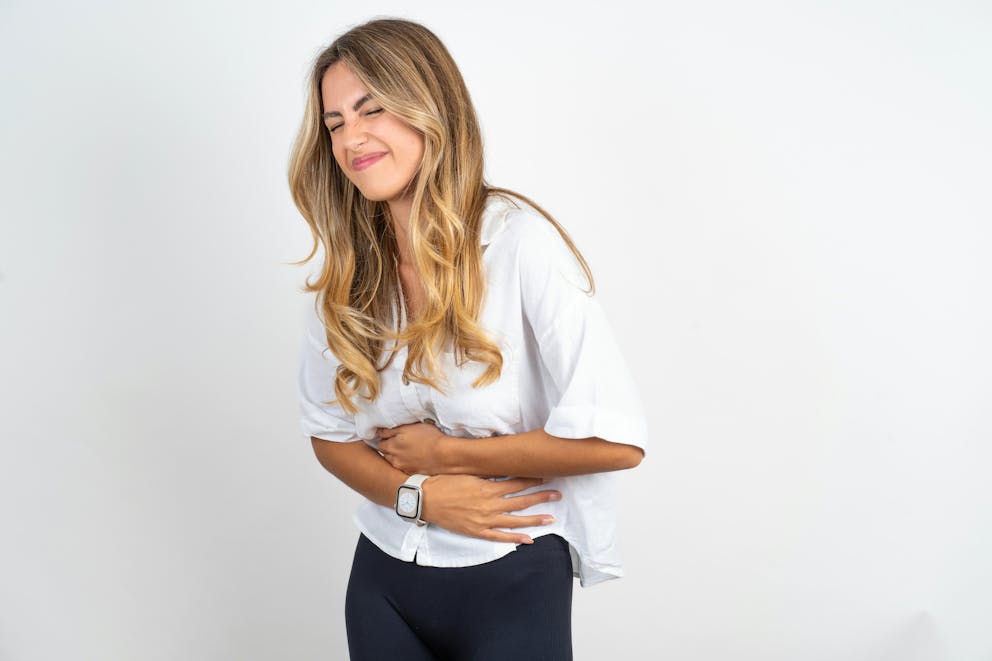The Cause of Lower Abdominal Cramping Pain
The Cause of Lower Abdominal Cramping Pain
Dealing with lower abdominal pain can be incredibly frustrating. It feels like a betrayal from your own body, right? One minute you're going about your day, and the next, you're doubled over in discomfort.
You start Googling symptoms, but all you find are confusing medical terms and generic advice that doesn't seem to apply to your situation. And honestly, who has time to see a doctor for every little ache and pain? If this sounds familiar, trust me, I understand.
Let's talk about practical, natural strategies for lower abdominal pain treatment that have helped many people just like you.
The Problem with Conventional Lower Abdominal Pain Treatment
Too often, the medical system focuses on symptom management instead of addressing the root cause of a problem, and lower abdominal pain treatment is no exception. A doctor might prescribe antispasmodics to reduce muscle spasms or recommend over-the-counter antacids.
While these can provide temporary relief, they don't address what's causing the issue in the first place.
This is where exploring natural remedies for menstrual cramps, understanding the role of diet in irritable bowel syndrome, and seeking guidance from a healthcare provider becomes essential.
The Digestive System: A Complex Machine
The digestive system is fascinating, really. Think of it as an intricate machine, carefully breaking down the food you eat to extract nutrients and fuel your body. When this process is disrupted, it’s like throwing a wrench in the gears.
Have you ever considered how kidney infections or even a heart attack can manifest as lower abdominal pain? The abdominal cavity houses a complex network of organs, and understanding their interconnectedness is crucial for effective lower abdominal pain treatment.
The most overlooked aspect of lower abdominal pain treatment? Diet. I can't stress this enough – the foods you eat directly impact your gut health. And your gut, in turn, plays a critical role in everything from your digestion to your immune system.
Amazing, right? But what happens when you throw the wrong fuel into the engine? Trouble.

Common Causes of Lower Abdominal Pain
Let's talk about some of the common culprits behind those aches and cramps:
1. Malabsorption: When Your Gut Doesn't Absorb Nutrients Properly
Remember those tiny cells in your colon – the enterocytes and colonocytes? They’re the unsung heroes of digestion, responsible for absorbing nutrients from your food.
However, when these cells aren't functioning properly, due to inflammation or other issues, malabsorption can occur.
This can be linked to conditions like inflammatory bowel disease, where the body's immune system mistakenly attacks the digestive tract, leading to pain and discomfort.
Signs of malabsorption include:
Bloating and gas
Diarrhea or loose stools
Oily stools that float
Skin issues like dryness, flakiness, or discoloration
If you experience persistent diarrhea or other bowel movement changes accompanied by abdominal pain, it's crucial to consult a healthcare professional to rule out serious conditions like colon cancer or small intestine cancer.
2. SIBO (Small Intestinal Bacterial Overgrowth)
Believe it or not, your gut is home to trillions of bacteria. It's a delicate ecosystem. When this balance is thrown off, and there’s an overgrowth of bacteria in the small intestine (where it shouldn't be), you get SIBO.
This can cause bloating, gas, diarrhea, and abdominal pain. SIBO often goes undiagnosed because its symptoms can mimic other digestive problems. Understanding what's causing your symptoms is the first step towards proper treatment.
3. Irritable Bowel Syndrome (IBS)
IBS is a common disorder affecting the large intestine, often triggered by stress, certain foods, and other factors we don't fully understand. Common symptoms are lower abdominal pain, cramping, bloating, gas, diarrhea, and constipation. Sound familiar?
Managing IBS often involves identifying and avoiding trigger foods, managing stress levels, and in some cases, medications prescribed by a healthcare provider.
4. Diverticulitis: Inflammation or Infection
Diverticula are small pouches that can form in the lining of your digestive system, most commonly in the colon. When these pouches become inflamed or infected, it’s called diverticulitis – definitely a culprit for abdominal pain.
This condition can cause severe pain and may require medical attention, especially if you experience fever, nausea, or vomiting along with abdominal pain.
A Holistic Approach: Natural Lower Abdominal Pain Treatment
Ready for some good news? You have more control over your gut health – and those pesky abdominal pains – than you may realize.
Remember how I emphasized the connection between your diet and your digestion? This is where we focus on natural strategies for long-term relief:
1. Bone Broth: A Gut-Healing Powerhouse
Remember what I said about collagen? It’s essential for maintaining a healthy gut lining, reducing inflammation, and even promoting joint health. You can get your daily dose by incorporating bone broth into your routine.
Think of bone broth as a warm, soothing hug for your digestive tract.
2. Probiotic-Rich Foods: Supporting a Balanced Microbiome
Remember those friendly gut bacteria? Well, probiotics are like cheerleaders for your gut. Foods rich in probiotics introduce beneficial bacteria to help restore balance and crowd out the troublemakers.
Probiotics are particularly helpful for conditions like irritable bowel syndrome and can be a valuable tool for lower abdominal pain treatment.
Kefir (look for lactose-free options)
Raw cheese (goat or sheep cheese is often easier to digest than cow's milk cheese)
Fermented vegetables like sauerkraut and kimchi (start with small portions to test your tolerance)
3. The Magic of Cabbage: A Digestive Superfood
I love using readily available, budget-friendly foods as medicine, and cabbage is an excellent example. Rich in fiber and glutamine, an amino acid that’s incredibly soothing to the gut, cabbage has earned a top spot in the digestive health world. Don’t underestimate its power.
Remember, incorporating a variety of fruits, vegetables, and whole grains into your diet can provide essential nutrients and support a healthy digestive system.
4. Prioritizing Healthy Fats
Ditch the processed oils and embrace the good fats. Focus on including sources like:
Ghee: Loaded with nutrients and easy to digest, making it an excellent choice for those with digestive issues.
Saturated animal fats (from healthy sources): Choose grass-fed, pasture-raised animals whenever possible for optimal nutrition.
Healthy fats play a crucial role in nutrient absorption and hormone production, contributing to overall well-being.
5. Hydration is Key, but Ditch the Plain Water
Staying properly hydrated is crucial, especially when dealing with digestive upset, but guzzling plain water can do more harm than good. Remember those electrolytes? Replenishing them is crucial for proper hydration.
Consider incorporating electrolyte-rich drinks or adding a pinch of sea salt to your water to replenish lost minerals.
6. Intermittent Fasting for Gut Rest
This is a powerful tool for improving your overall health, and it all comes down to giving your digestive system a break. When you're constantly eating, your body doesn't get a chance to focus on repair and rejuvenation.
Intermittent fasting can be particularly beneficial for individuals with conditions like irritable bowel syndrome, but it's essential to consult with a healthcare provider before making any significant dietary changes. It's like hitting the reset button for your gut.

Listen to Your Body and Seek Professional Help When Needed
Remember, lower abdominal pain treatment is not a one-size-fits-all approach. What works for one person might not work for another, and sometimes professional help is necessary.
It's important to be your own health advocate.
Don't be afraid to speak up, ask questions, and get a second opinion if something doesn’t feel right.
Lower abdominal pain can sometimes be a symptom of more serious conditions like kidney stones, pelvic inflammatory disease, or even appendicitis, so seeking timely medical advice is essential.
For women, lower abdominal pain can be related to their reproductive organs, such as menstrual cramps, ovarian cysts, or pelvic inflammatory disease. Understanding the potential causes based on your gender can guide you toward appropriate treatment options.
Conclusion
Lower abdominal pain is never fun, but by adopting a holistic approach that prioritizes gut health, you can finally get to the root cause of your discomfort and start feeling better, naturally.
Remember those trillions of bacteria residing in your gut? They play a vital role in your overall health, and keeping them happy should be a top priority.
By incorporating the strategies outlined in this article, you can nurture a thriving gut microbiome, leading to improved digestion and reduced abdominal pain.
And trust me, a healthy, happy gut makes all the difference.
Previous blog
The FIRST Sign of Gallstones over 80% of the Time
Popular
08/21/2024
55.7K views
02/23/2025
46.8K views
11/18/2024
281.2K views
03/18/2024
11/21/2022




